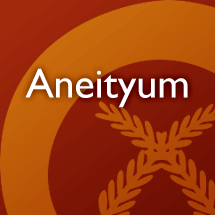Your search for * in family Dioscoreaceae has returned 5 entries
masoa
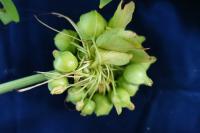
n. herb to 1 m, fruits green (collection: Michael J. Balick #4915)
Example: This plant was said to have been brought in by the early missionaries, used to starch their clothes and grown as a crop for export to England. Used as a food crop as well, the root is mashed, dried in the sun and kept until needed. To process, put the roots in a bowl, add water and soak for 1 day and night, pour off the water and keep the starch. Prepare this food like lap-lap that is cooked on a fire in a pan.
bookmarkmasoa
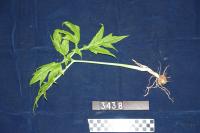
n. sterile herb, juvenile form (collection: Gregory M. Plunkett #3438)
Example: This plant is used as a starchy food. To prepare it, grarte it into a dish, wash with water, the starch settles to the bottom, pour off the water, dry the starch in the sun and make it into a powder. The starch can be cooked with coconut milk and eaten.
bookmarknahoacen
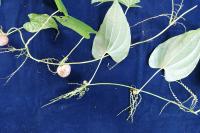
n. vine to 3-4 m, aerial tubers brown (collection: Michael J. Balick #4872)
Example: Normally these fruits are considered poisonous. But, people have learned to peel off the skin of the fruits, put the peeled fruits in a conical basked and place a bamboo tube that is dripping water over it to wash the basket of fruits for 3-5 days. This is said to leach out the poison and the end result is similar in consistency to cheese. Wrap this up with leaves and put it in an earth oven to cook. This plant is eaten as a "starvation food" only, consumed in times of drought and famine.
bookmarknomodej wow
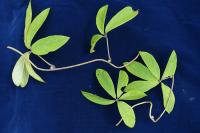
n. vine to 2 m, aerial tubers and lobed leaves. (collection: Michael J. Balick #4946)
Example: This is a root crop. It is harvested in April-June. The leaves turn yellow and indicate that the crop is ready to harvest. If planted in the old days the root would get much larger. It is a good cyclone disaster food. Grows wild now. Boil the tuber in fresh water, when it is cooked add a bit of sea water to give it a salty taste. Chew the starchy root and spit out the fiber. Another variety is like sweet potato and a person can eat the entire root without spitting out the fiber. Can mix with coconut milk as well to eat.
bookmarknoyeiwow
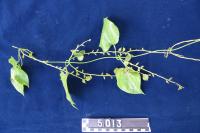
n. vine to 4 m, cultivated (collection: Michael J. Balick #5013)
Example: This is a cultivated, edible tuber. If a cyclone comes and blows the vines, the tuber will still be intact. The vines of this type of Dioscorea are very strong. Normal yam vine tears in high winds and the tuber will not grow for food but will die; this one will not. It is very good for places with strong winds and storms.
bookmark